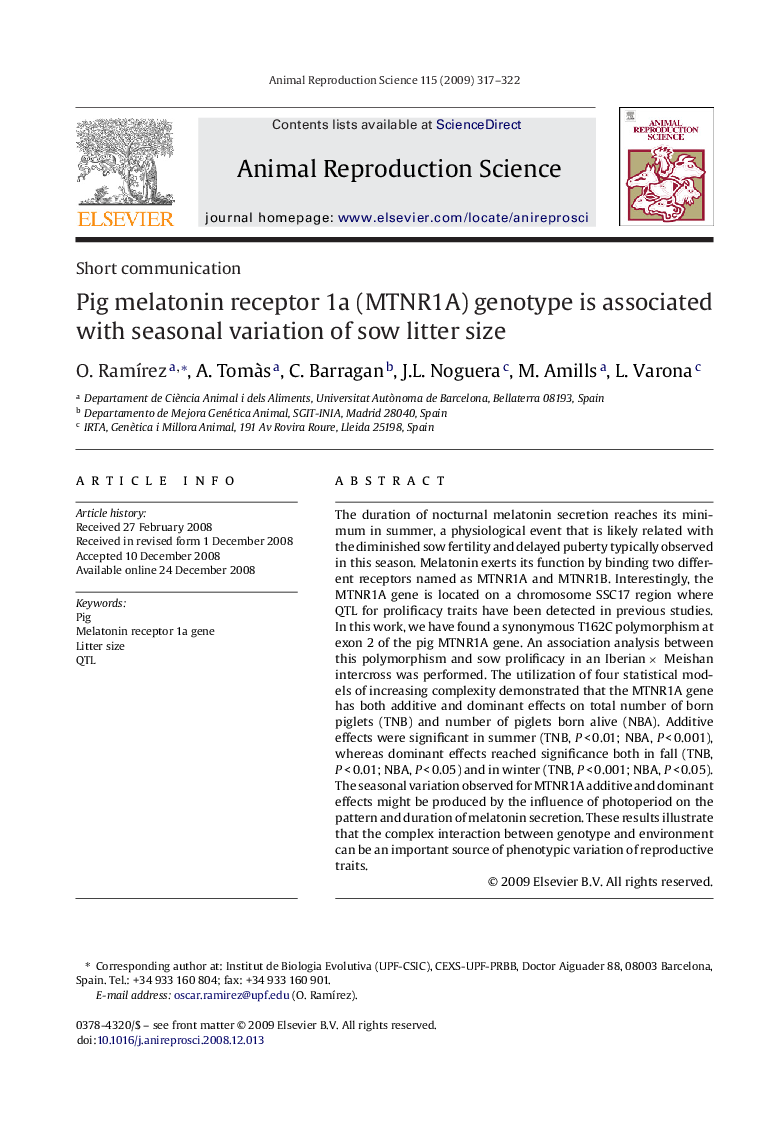| Article ID | Journal | Published Year | Pages | File Type |
|---|---|---|---|---|
| 2074132 | Animal Reproduction Science | 2009 | 6 Pages |
The duration of nocturnal melatonin secretion reaches its minimum in summer, a physiological event that is likely related with the diminished sow fertility and delayed puberty typically observed in this season. Melatonin exerts its function by binding two different receptors named as MTNR1A and MTNR1B. Interestingly, the MTNR1A gene is located on a chromosome SSC17 region where QTL for prolificacy traits have been detected in previous studies. In this work, we have found a synonymous T162C polymorphism at exon 2 of the pig MTNR1A gene. An association analysis between this polymorphism and sow prolificacy in an Iberian × Meishan intercross was performed. The utilization of four statistical models of increasing complexity demonstrated that the MTNR1A gene has both additive and dominant effects on total number of born piglets (TNB) and number of piglets born alive (NBA). Additive effects were significant in summer (TNB, P < 0.01; NBA, P < 0.001), whereas dominant effects reached significance both in fall (TNB, P < 0.01; NBA, P < 0.05) and in winter (TNB, P < 0.001; NBA, P < 0.05). The seasonal variation observed for MTNR1A additive and dominant effects might be produced by the influence of photoperiod on the pattern and duration of melatonin secretion. These results illustrate that the complex interaction between genotype and environment can be an important source of phenotypic variation of reproductive traits.
